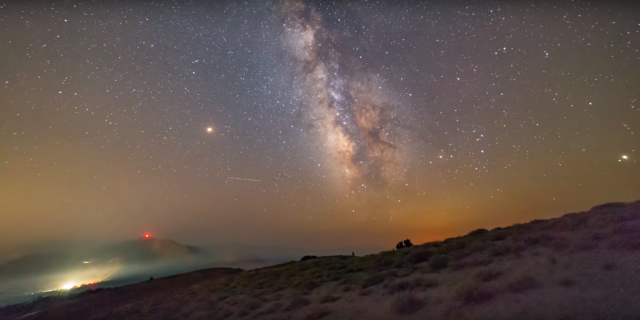A shower of some of the brightest known meteors will light up the skies worldwide next week.
The annual Perseids meteor shower will peak in the early mornings Aug. 11, 12 and 13, according to EarthSky. The Perseids are bright, and stargazers can typically see between 40 to 50 meteors per hour, EarthSky reported.
In some years, more than 100 meteors zoom through the sky per hour, but that is not very likely this year, according to EarthSky.
“In a typical year, meteor numbers increase after midnight,” astronomers said on EarthSky. “But – before dawn on all three peak mornings (August 11, 12 and 13) – fairly bright moonlight will flood the sky.”
The shower comes around every year as Earth goes through a debris cloud, according to CNET.
How a President Biden could remake US-Turkey ties
The Great Escape: For beetle species, being eaten is not the end (video)
“This famous shower comes around this time every year as the Earth drifts through a debris cloud left behind by the giant comet 109P/Swift-Tuttle,” CNET reported. “Bits of dust, pebbles and other cosmic detritus slam into our atmosphere, burning up into brief, bright streaks and even the occasional full-blown fireball streaking across the night sky”.
The best way to watch the Perseids is to head out to a place with little light pollution as late as possible, CNET reported. No special equipment or extensive star knowledge is needed to enjoy the shower, EarthSky reported.
Give your eyes time to adjust. EarthSky recommends watching for at least an hour because eyes can take as long as 20 minutes to adapt to the darker night.
“A rate of 60-70 meteors per hour, for instance, means around one meteor per minute, including faint streaks along with bright, fireball-generating ones,” Space.com reported. “Some skywatchers plan to camp out to see the Perseid meteor shower, but at the very least, viewers should bring something comfortable to sit on, some snacks and some bug spray”.
Source: Miami Herald







































